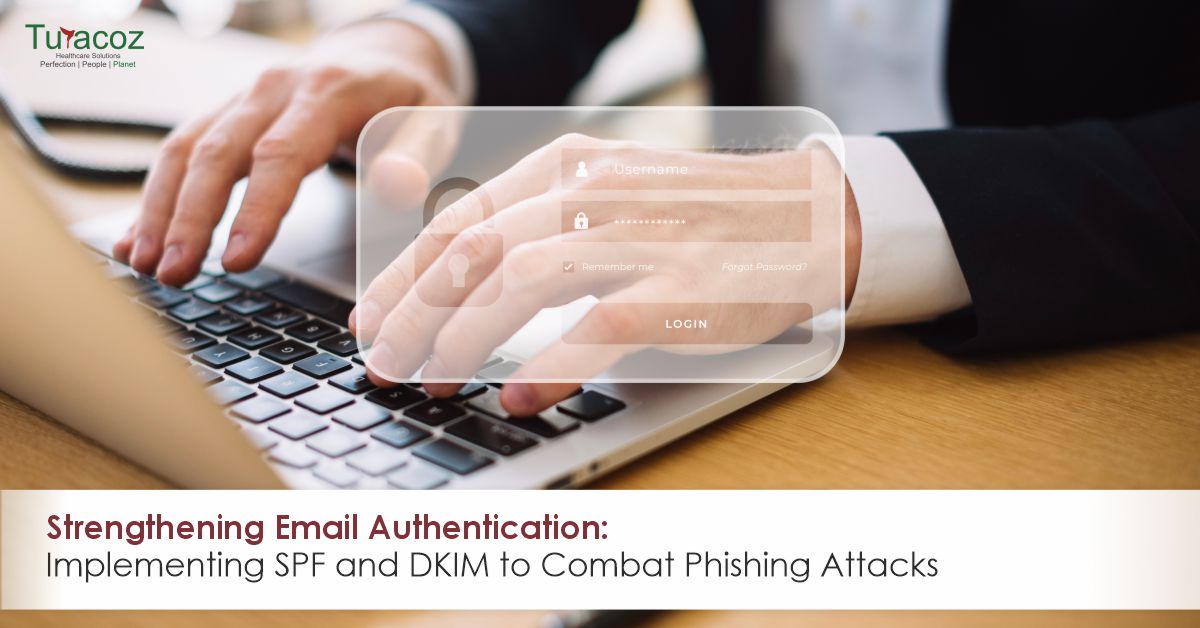Email authentication plays a crucial role in safeguarding your company from phishing attacks. Sender Policy Framework (SPF) and DomainKeys Identified Mail (DKIM) are two effective email authentication methods that verify the legitimacy of email senders and prevent email spoofing. In this blog post, we will delve into the implementation of SPF and DKIM and highlight their importance in securing your organization’s email communication. By following the steps outlined below and understanding the benefits of SPF and DKIM, you can significantly reduce the risk of phishing emails reaching your employees’ inboxes.
- Sender Policy Framework (SPF) Implementation:
Sender Policy Framework (SPF) is an email authentication protocol that enables domain administrators to specify which IP addresses are authorized to send emails on behalf of their domain. Implementing SPF involves several steps:
- Identify Authorized Sending Servers: Begin by identifying the IP addresses of your company’s legitimate email servers and any authorized third-party email services that send emails on behalf of your domain.
Click Here:- Enhancing Email Security: Safeguarding Your Company from Phishing Attacks
- Create SPF Records: Create a DNS TXT record for your domain that includes the IP addresses authorized to send emails. This record serves as your SPF policy and specifies the permitted sending servers and their respective IP addresses.
Example:
TXT Record: “v=spf1 ip4:192.168.1.10 ip6:2001:db8:abcd::1 include:third-party.com -all”
- Publish SPF Records: Publish the SPF records in your domain’s DNS zone. Ensure that the records accurately reflect the authorized sending servers.
- Define SPF Policy: Configure the SPF policy to indicate the action the email server should take if an email fails SPF verification. It is recommended to set a strict policy to reject or mark as suspicious any emails that fail SPF.
Example:
SPF Policy: “-all” (Reject emails that fail SPF)
- DomainKeys Identified Mail (DKIM) Implementation:
DomainKeys Identified Mail (DKIM) is an email authentication method that adds a digital signature to the email’s header, verifying the authenticity of the sender’s domain. Implementing DKIM involves the following steps:
- Generate DKIM Keys: Generate a pair of cryptographic keys – a private key and a public key. The private key should be securely stored on your email server, while the public key will be added to your DNS as a DKIM record.
- Add DKIM Records to DNS: Publish the public DKIM key as a DNS TXT record in your domain’s DNS zone. This record allows email servers receiving your domain’s emails to verify the DKIM signature.
Example:
TXT Record: “v=DKIM1; k=rsa; p=MIIBIjANBgkqhkiG9w0BAQEFAAOCAQ8AMIIBCgKCAQEAtL/fuHc4K8h1RE6dw7uU5VUq/vFQ46u6eMNBVLU3A1CaeY7pjuFAKoVrW5bDvMKy4J4e3HPvNtP+M1XzW5g+DHsEjcc5IiA2UkYyVJBUKRXRGpnJSLn+KcN1CrQc1dMVmJL2ORg28wAYIrrrTdDdLjC/87R5T1LbMmXvqZqS2VG+yOok+3jN26UIGpQz5T4RdSG7Q7EymkO2ZHSWdTEzj5Hd+Uuus7L85mdU8HE6A/hlS/VaSCQpKQ2vS/E7yNTVvPqB/ITcQyXV04zDo+U3cOeR5U6Qo5S5DfPRGLIi94Wljm/IYDzU+CHHnQ1aUDRq1/5lONC3u4/S6XAViJJq1DzQIDAQAB”
- Configure Email Server: Configure your email server to add the DKIM signature to outgoing emails using the private key. The server signs the outgoing emails, embedding the DKIM signature in the email header.
- Enable DKIM Verification: Configure the recipient’s email server to perform DKIM verification when receiving emails. The server retrieves the DKIM public key from the DNS and verifies the email’s signature.
- Benefits of SPF and DKIM:
Enabling SPF and DKIM provides numerous benefits for email security:
- Reduced Email Spoofing: SPF and DKIM mechanisms prevent malicious actors from impersonating your domain, ensuring that email senders are authorized and email integrity is verified.
- Enhanced Email Deliverability: Implementing SPF and DKIM improves email deliverability, as reputable email servers are more likely to accept and deliver emails from authenticated domains.
- Protection against Phishing Attacks: SPF and DKIM enable recipients to identify legitimate emails from your domain, reducing the chances of falling victim to phishing attempts.
Conclusion:
Implementing SPF and DKIM is a crucial step in securing your company’s email communication and protecting it from phishing attacks. By following the implementation steps for SPF and DKIM, organizations can significantly reduce the risk of email spoofing and enhance email security. These email authentication methods provide added trust and assurance for both senders and recipients, fostering a safer email environment. Strengthen your email authentication process by enabling SPF and DKIM and fortify your defenses against phishing attacks.






























